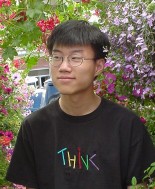Peephole Displays: Pen Interaction on Spatially Aware Handheld Computers
 Ka-Ping Yee, UC Berkeley
Ka-Ping Yee, UC Berkeley
ping@zesty.ca
Seminar on People, Computers,
and Design
Stanford University May 16, 2003
Peephole Displays are pen-operated handheld computers that track their own position in order to provide a movable window on a virtual workspace. Previous research has explored various ways of using spatially tracked displays, in particular as windows onto 3-D virtual realities. This work is a bit different in that it looks at combining pen input with spatial tracking, and borrows manipulation techniques from familiar 2-D displays.
With a Peephole Display, you can use both hands together: the hand holding the display can navigate through information, and the hand holding the pen can manipulate that information. Thus, you can navigate and manipulate simultaneously, without interrupting the flow of work. It's also possible to manipulate objects larger than the screen more easily using Peephole techniques. Peephole displays also enable a few totally new kinds of interaction, such as 3-D drag-and-drop.
In this talk, I'll describe and illustrate the Peephole concept, and show a video demonstration of some applications that take advantage of Peephole interaction techniques. I'll also describe the results of a user study to assess the feasibility of these techniques for PDAs, and show some more speculative ideas on future possibilities.
Ka-Ping Yee is a Ph. D. student in Computer Science at UC Berkeley specializing in HCI. He has previously worked at Alias|Wavefront, Xerox PARC, Industrial Light and Magic, and Opera Software, and has participated in the development of the Python programming language. His research interests include critical discussion, information visualization, capability-based security, and secure interaction design.
View this talk on line at CS547 on Stanford OnLine
Titles and abstracts for all years are available by year and by speaker.
For more information about HCI at Stanford see